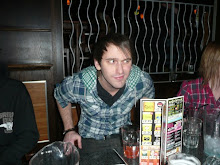Well all of us from the Computer Games Programming course at Derby University were supposed to of been working on our game design documents for our Famous Five project, which is for the Game Development Techniques module. However some of us had more interesting things to do :p .In my spare time over the summer I kind of got carried away with working on my own little XNA game project. The project was my attempt at developing a 2D 'slash & hack' sort of genre game. I wanted to create something that looked cool and that was addictive to play, so with that and the huge amounts of spare time I had (being wasted on staring at the four walls because I have no friends) I began making "Slash & Smash"..
This game basically starts off with the player having the option of customizing the appearance of the "Knight" you play as. You can customize the Head, Body/Torso and Weapons. Well by customize, I actually mean you get to select three different parts for each part of the player. You are then presented with an instructions screen, where obviously you are shown the controls and tips/hints for gameplay.
The player is able to jump, attack and block. The jumping is only really used to avoid enemy fireballs, the blocking and attacking are pretty self explanatory.
Jumping
Used to avoid fireballs.
Attacking
Used to attack your enemies and counter enemy fireballs.
Blocking
Used to defend yourself from projectile & melee attacks.
Now at the moment I've only got a one minute playable demo of it, if that. Since I've started my second year at university I haven't had the time to continue with this, ill get round to finishing it though. I've provided a few screenshots of my really really rough, unfinished, probably rubbish game in the below.
































